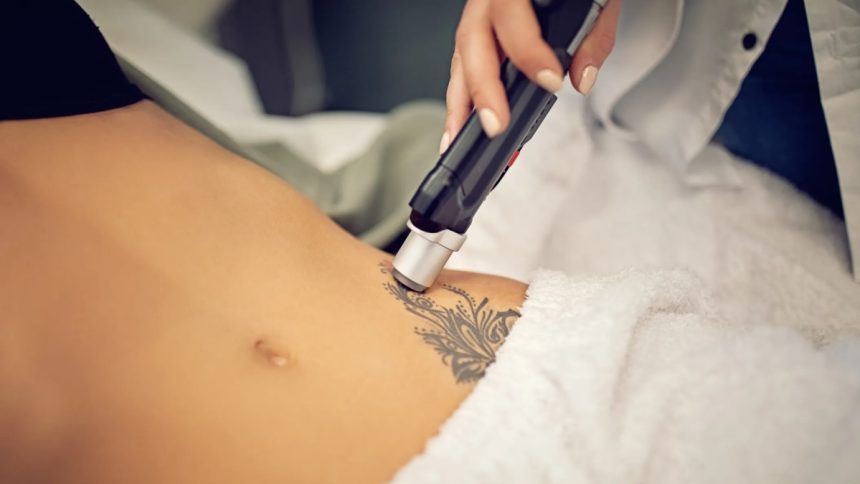Getting a tattoo is often a way to express oneself, commemorate a significant event, or simply enjoy a piece of art on the skin. However, not all tattoos age well with time, and some individuals find themselves seeking a way to remove or alter their ink. Whether it’s due to a change in personal taste, a professional requirement, or a poorly executed design, the demand for tattoo removal has grown significantly. If you’re contemplating this procedure, it’s essential to understand what to expect during the tattoo removal process.
Initial Consultation
The journey to removing a tattoo begins with an initial consultation with a licensed professional. During this session, the specialist will evaluate your tattoo’s size, color, and location. They will also consider your skin type and medical history to determine the most suitable removal method. This consultation is crucial for setting realistic expectations, as some tattoos may require more sessions than others to achieve the desired results.
The Tattoo Removal Methods
There are several methods available for tattoo removal, but the most common and effective one is laser removal. Other methods include surgical excision and dermabrasion, but these are less frequently used due to their invasiveness and potential for scarring.
Laser Tattoo Removal
Laser tattoo removal is the gold standard in the industry. It works by emitting laser light that penetrates the skin and breaks down the tattoo ink into smaller particles. The body’s immune system then gradually flushes out these particles over time. The lasers used in this process are highly advanced and can target different colors of ink effectively.
Surgical Excision
Surgical excision involves cutting out the tattooed skin and stitching the remaining skin back together. This method is usually reserved for small tattoos and is performed under local anesthesia. While it offers immediate results, it does leave a scar, making it less ideal for larger tattoos.
Dermabrasion
Dermabrasion involves sanding down the top layers of the skin to remove the tattoo. This method is less precise than laser removal and can be quite painful. It also carries a higher risk of scarring and infection.
Pain and Discomfort
One of the most common concerns about tattoo removal is the level of pain involved. The sensation during laser tattoo removal is often described as similar to having a rubber band snapped against the skin. While it can be uncomfortable, most clinics offer numbing creams or local anesthesia to minimize pain. The level of discomfort also depends on the tattoo’s location and your pain tolerance.
Number of Sessions
The number of sessions required to remove a tattoo varies based on several factors, including the tattoo’s size, age, color, and depth. On average, most tattoos require between 6 to 12 laser sessions spaced about 6 to 8 weeks apart. Older tattoos and those with black ink are generally easier to remove, while newer tattoos and those with multiple colors may take longer.
Aftercare
Proper aftercare is crucial for a successful tattoo removal process. Immediately after a laser session, the treated area may appear red and swollen, similar to a sunburn. It’s essential to keep the area clean and apply an antibiotic ointment to prevent infection. Avoid sun exposure and refrain from picking or scratching the treated area to allow for proper healing.
Potential Side Effects
While tattoo removal is generally safe, it does come with potential side effects. These can include redness, swelling, blistering, and temporary changes in skin pigmentation. In rare cases, scarring can occur, especially if the aftercare instructions are not followed diligently. It’s essential to discuss these potential risks with your specialist during the initial consultation.
Costs
The cost of tattoo removal can vary widely depending on the size and complexity of the tattoo, the number of sessions required, and the clinic’s location. On average, laser tattoo removal can cost between $200 to $500 per session. It’s important to consider these costs when planning for tattoo removal, as multiple sessions are usually necessary.
Emotional Considerations
Tattoo removal can be an emotional journey. For some, it marks the end of a chapter, while for others, it may feel like a second chance. It’s essential to be mentally prepared for the process, as it can take several months to complete. Talking to others who have undergone tattoo removal or seeking support from friends and family can be helpful.
Choosing the Right Clinic
Selecting a reputable clinic is crucial for a successful tattoo removal experience. Look for clinics with certified professionals who have extensive experience in tattoo removal. Reading reviews and asking for before-and-after photos can also provide insight into the clinic’s quality of work. If you’re in the Hamilton area, consider searching for tattoo removal Hamilton to find local clinics with good reputations.
Conclusion
Tattoo removal is a multi-step process that requires patience, commitment, and proper aftercare. By understanding what to expect and choosing a reputable clinic, you can achieve the best possible outcome. Whether you’re looking to erase a past mistake or make room for new ink, the tattoo removal process can help you achieve your goals and move forward with confidence.
Lynn Martelli is an editor at Readability. She received her MFA in Creative Writing from Antioch University and has worked as an editor for over 10 years. Lynn has edited a wide variety of books, including fiction, non-fiction, memoirs, and more. In her free time, Lynn enjoys reading, writing, and spending time with her family and friends.














